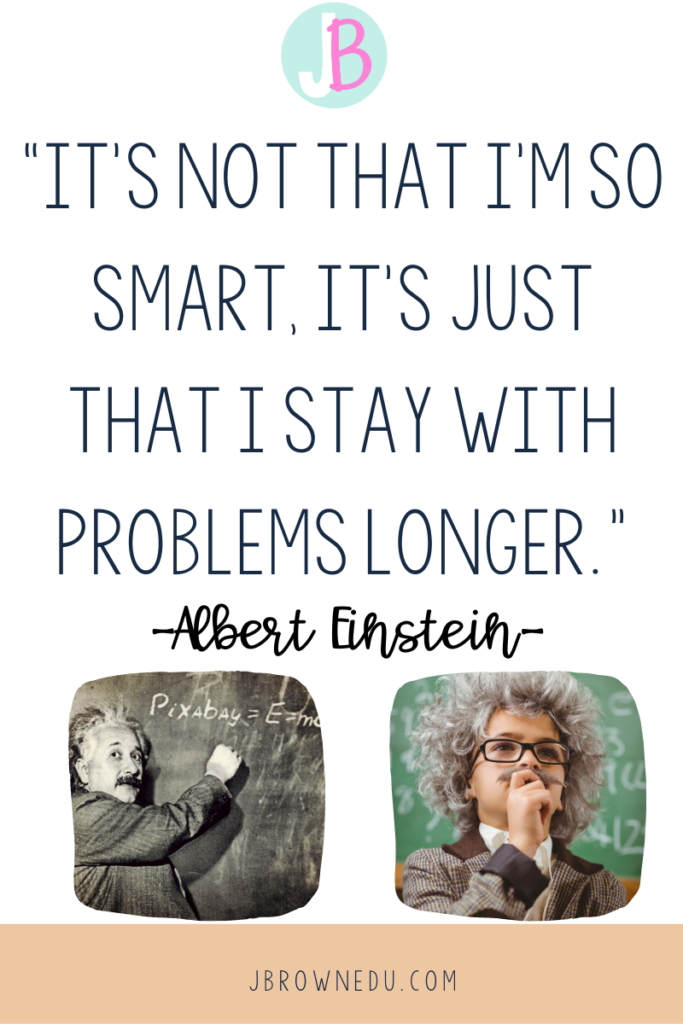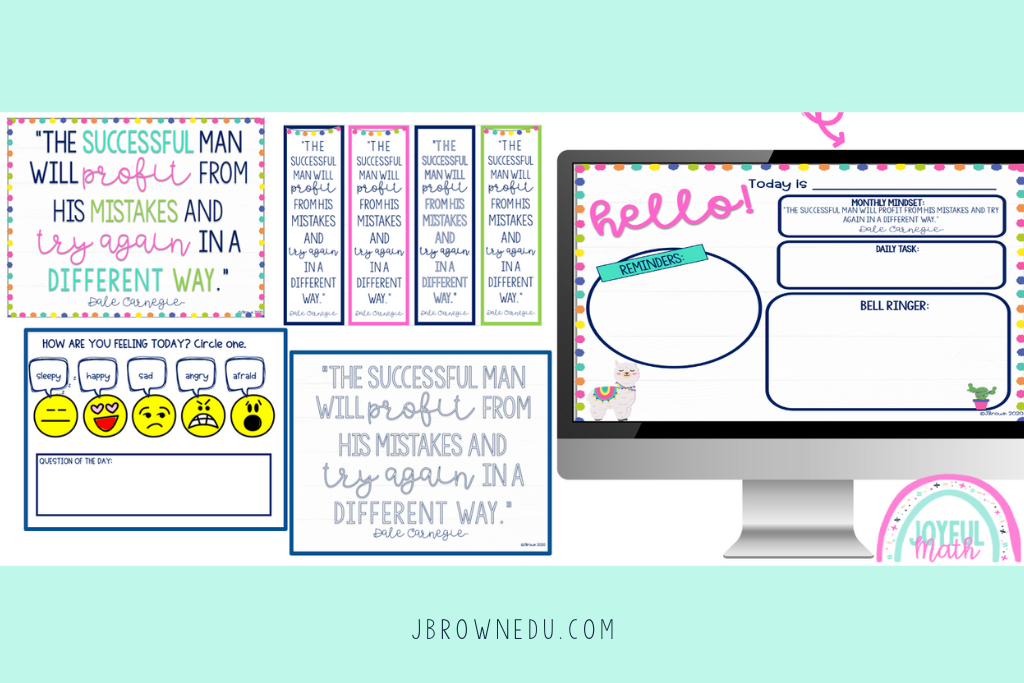Imagine what could be accomplished with great work ethic! What does the work ethic of the students in your class look like? Do they seem to understand the content during whole group instruction, but as soon as you release them to work independently, they freeze? Can I tell you that I know that feeling all too well? Hang in there, friend. I know you are feeling discouraged, which tends to affect your demeanor with your students and it’s not the teacher you pictured yourself being. But don’t give up just yet. I want to share a few things with you that have helped me along the way.

You see, In my experience as an educator, I’ve always taught a group of students that struggled with the material. Teaching 5th-grade math was no cakewalk. Teaching the students that struggled was my jam. It challenged me to be creative and break the material down in the best way. I loved having those classes in the first part of my day because if I could break the content down the best in my first class, I knew the rest of the day would go smooth sailing. While breaking the content down was one layer of the cake to establishing great work ethic in my students, it wasn’t even the foundation. So let’s backtrack and lay the foundation first.
Here are a few things that helped me build great work ethic in my students and increase their confidence to work independently.
SEL in Math Class
There’s a big buzz around Social Emotional Learning (SEL) right now, and I’m a witness to the transformation that happens. When implementing SEL, not only did I see an increase in my students’ confidence in themselves, but an increase my confidence in them as well. To engage in Math Practice 1, students must persevere in solving problems. How can students persevere in solving problems when they are too afraid to even start the problem? So the root issue may be fear, not a lack of work ethic.
One way to incorporate SEL in math is through monthly mindset quotes. One of my favorite quotes that you’ll hear me mention a lot, is an Einstein quote. He says, “It’s not that I’m so smart, it’s just that I stay with problems longer.” If this isn’t math practice 1 at its finest, I don’t know what is.

This quote changes the stigma of getting answers correct because a student is smart. Another one of my favorite quotes is by Dale Carnegie. He says, “The successful man will profit from his mistakes and try again in a different way.” This quote also changes a stigma. Instead of equating success with getting an answer correct, success is equivalent to making mistakes and trying different ways. This takes the pressure off of students having to get answers correct and encourages them to try.
I’ve also found that when students know that I just want to see their very best effort and I’m not looking for correct answers, they are more inclined to work. So this is a great way to communicate to students how I am feeling about them as well.
So Jay, now that I have these quotes, what do I do with them? Glad you asked. You want to have these quotes in front of students as much as possible as a constant reminder. Place them on your slides, posters around your classroom, give them bookmarks with the quotes on them, bulletin boards, class newsletter, etc.
Not only do you want to have these quotes everywhere, but you also want to engage students in a discussion about the quotes. Get students to reflect on their math experiences using the quote. If the Dale Carnegie question is the focus, ask them questions such as, “What mistake did you make today?” or at the beginning of a class period you can ask students, “What different way will you try today?”
I know you’re thinking that you don’t have time to create this yourself. No worries, I got you friend. You can grab your free poster here. I’ve also included a couple of questions for you to ask students.
If you’d like quotes on agenda slides, posters, and questions for the entire school year, you can grab that here. Find the style that fits your classroom flow best.
Track Math Progress
Goal setting is another power punch to developing great work ethic in students. I like to call them “Goldilocks Goals.” Set goals for students that are “juuuusst right” for them. This gives students something that is attainable for them to reach. You will find your students more motivated to work if they know that you aren’t expecting them to give work that looks like Perfect Patty’s.

Math Scaffolds
Math scaffolds are my favorite. Not having scaffolded support in math class is like telling a friend that you’ll be there to support them on their big night and not showing up. When providing these supports we have to model for students how to use them. For example, when students have the calculator accommodation, it is often assumed that they will know how to use it. Students have to be taught how to use the calculator to go through each step of an algorithm instead of just entering the entire problem and getting an answer.
Math scaffolds that have really helped my students have been anchor charts and success criteria. If you are interested in how to implement anchor charts, you can check out this blog.
Example of Success Criteria
Often when I mention success criteria, I get asked “Exactly what is success criteria?” This is a great way for students to know what is expected of them. Success criteria also helps you understand exactly where your students are having a breakdown in their understanding. Many times in math, it’s simply the steps in the process of solving a problem. This can be done for standards that have a rigor component of procedural as well as conceptual. For example, if the standard is 4.NF.2, comparing fractions, the success criteria would be the thought process that students need to go through to solve:
- Draw area models of both fractions with wholes that are the same size.
- Create equal pieces by partitioning each model.
- Identify new equivalent fractions that have the same denominator.
- Compare the numerators.

So, the next time you try sending your students to work independently, make sure that these things are in place. If you are new around here, gift-giving is my love language. I have something else that I’d like to gift you with. I have a starter guide that will help you implement all of this. You can grab it here. ⬇️
Want to know more? Check out the article below.


